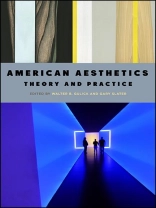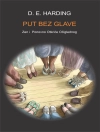Although there are distinctly American artists—Walt Whitman, Herman Melville, Grandma Moses, Thomas Hart Benton, and Andy Warhol, for example—very little attention has been devoted to formulating any distinctively American characteristics of aesthetic judgment and practice. This volume takes a step in this direction, presenting an introductory essay on the possibility of such a distinctly American tradition, and a collection of essays exploring particular examples from a variety of angles. Some of the essays in this collection extend pragmatist and process insights about the important place aesthetics has in molding and assessing experience. Other essays examine the place of American aesthetics in relation to such particular forms of art as painting, literature, music, and film. Three essays attend to the aesthetic aspects of a flourishing life. In each of the essays, American aesthetics is understood to arise out of deeply felt personal, historical, and cultural backgrounds. Consequently, not only are such relatively abstract notions as harmony, fit, elegance, proportion, and the like involved in aesthetic judgment, but also religious, political, and social factors become embroiled in aesthetic discernment. Thus the ongoing pattern of American aesthetics is shown to be distinguishable from such other varieties of aesthetic thought as analytic aesthetics, New Criticism, and postmodern approaches to aesthetics.
表中的内容
List of Illustrations
Preface
Acknowledgments
Part I: Introduction
1. Toward an American Aesthetics
Walter B. Gulick
Part II: Philosophical Contributions to American Aesthetics from the Past
2. The Primacy of Aesthetic Judgments: Emerson’s Deontological-Transcendentalist Account of Tragedy
Jacob L. Goodson
3. Peirce and Edwards on the Argument from Beauty
Michael L. Raposa
4. A Semeiotic Account of Paintings as Pure Icons that Communicate Beautiful Feelings
David Rohr
5. The Pragmatist Aesthetics of William James
Richard Shusterman
6. Between Nature and Art: Some Analytical Exemplifications of Dewey’s Aesthetics
Robert E. Innis
Part III: American Aesthetics: Contemporary Theoretical Contributions
7. Axiological Landscape Theory: Uniting Aesthetics, Ethics, and Inquiry
Wesley J. Wildman
8. Experience and Signs: Toward a Pragmatist Literary Criticism
Nicholas Gaskill
9. Music, Time, and the Egress of Possibility
Randall E. Auxier
10. Harmony, Existence, and the Aesthetic
Robert Cummings Neville
11. Historical-Aesthetic Complementarity: An American Philosophical Contribution to the Study of Religion
Gary Slater
Part IV: Applying American Aesthetic Theory to Practice
12. An Exemplary Critic in the Tradition of American Aesthetics: Harold Rosenberg
Leanne Gilbertson and Walter B. Gulick
13. Experiential Immersions in Beauty: A Confluence of James Turrell’s Light Spaces and Whitehead’s Aesthetics
Vaughan Durkee Mc Ternan
14. Dialogue: From Rich Experience to Minimalist Expression
Corey Drieth and Walter B. Gulick
15. The Fabric of Thirdness: A Concert Pianist’s Peircean Interpretation of Performance
Arthur Stewart
16. Inspiring Singers toward Emotional Communication through Aesthetic Discovery
Steven Hart
17. Budd Boetticher’s Transcendental Westerns, or, Schrader, Bazin, Sartre, and Neville Walk into a Saloon
James Mc Lachlan
Part V: Aesthetic Aspects of a Flourishing Life
18. Resolving the Tension of Everyday Aesthetics in a Deweyan Way
Thomas Leddy
19. The Struggle for Centering Things in an Age of Consumerism
David Strong
20. The Dynamics of Selving and the Aesthetics of Ecstatic Naturalism
Robert S. Corrington
List of Contributors
Index
关于作者
Walter B. Gulick is Professor Emeritus of Philosophy, Humanities, and Religious Studies at Montana State University Billings.
Gary Slater is Visiting Assistant Professor of Religious and Theological Studies at St. Edward’s University and the author of
C.S. Peirce and the Nested Continua Model of Religious Interpretation.












